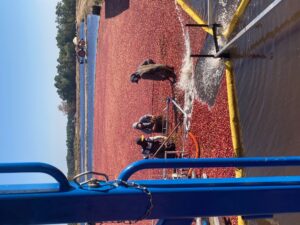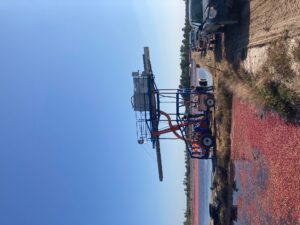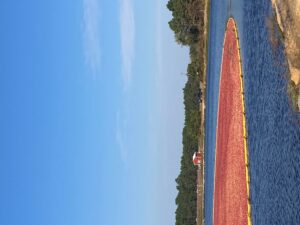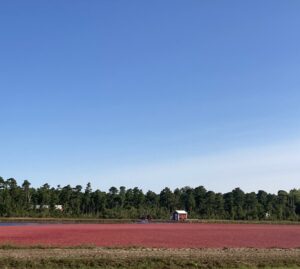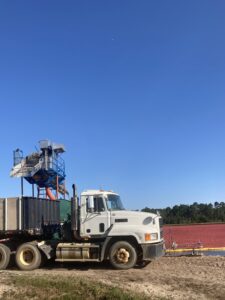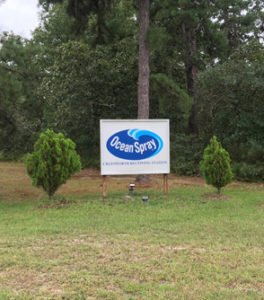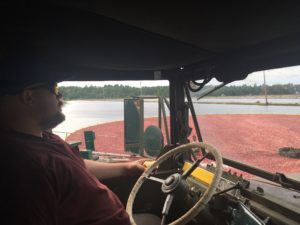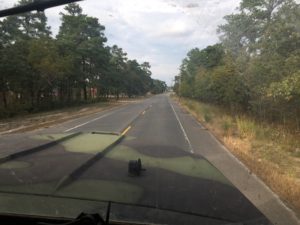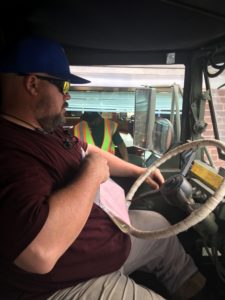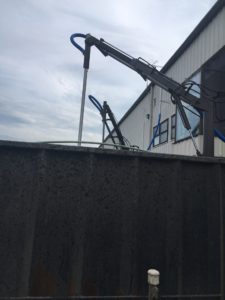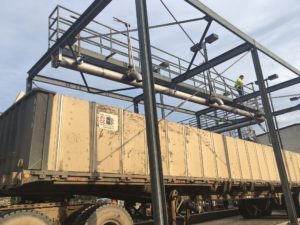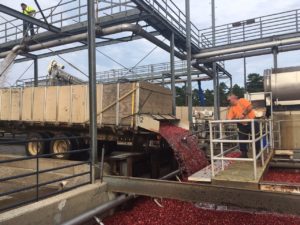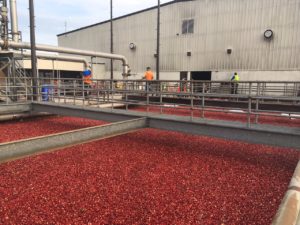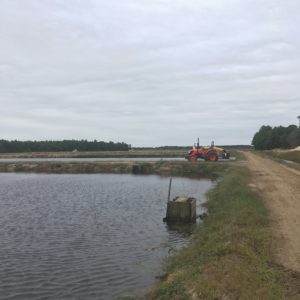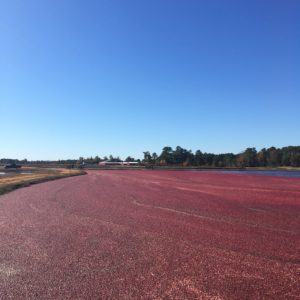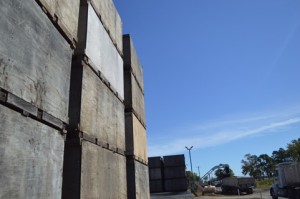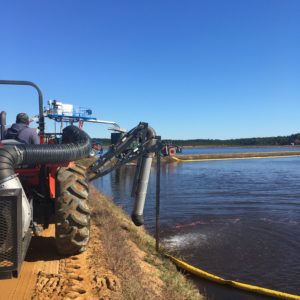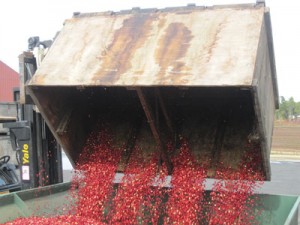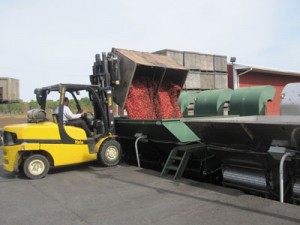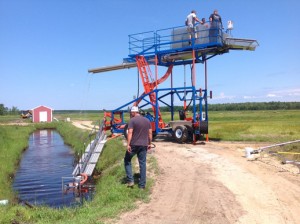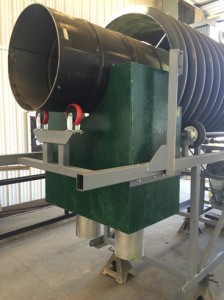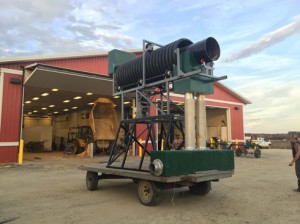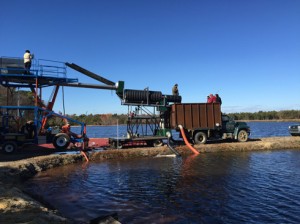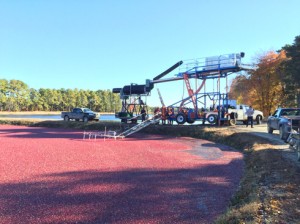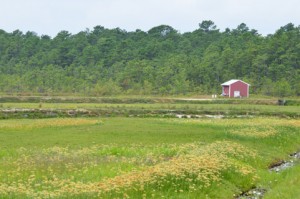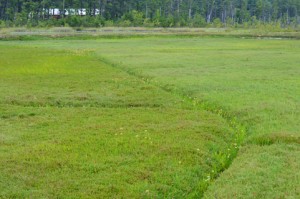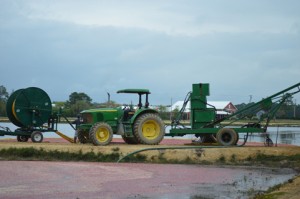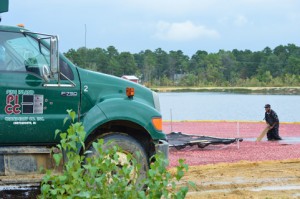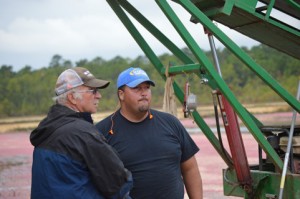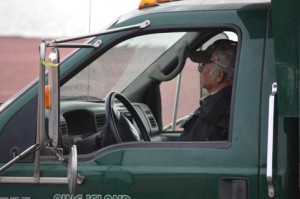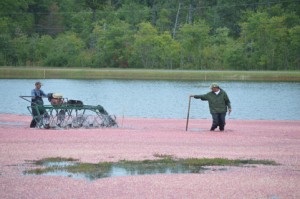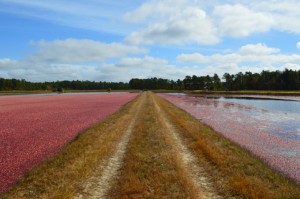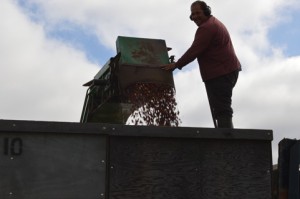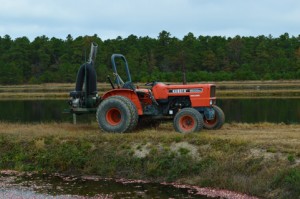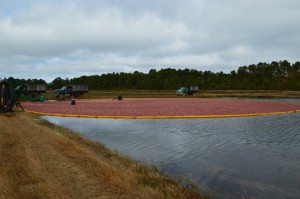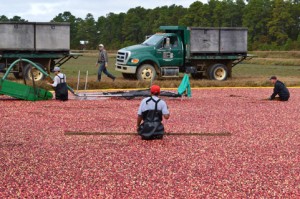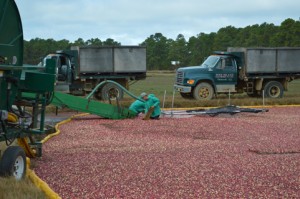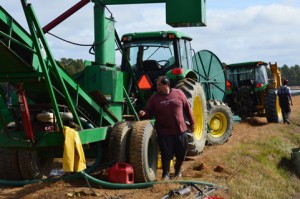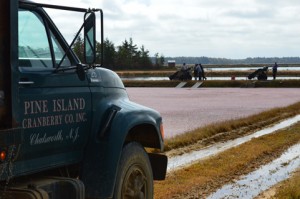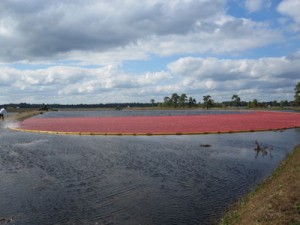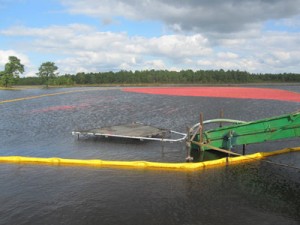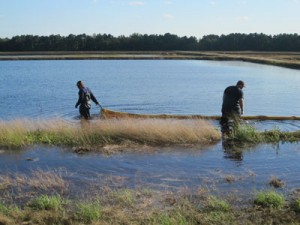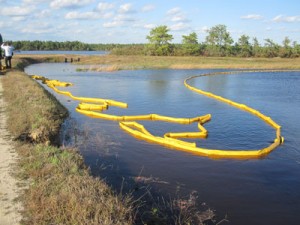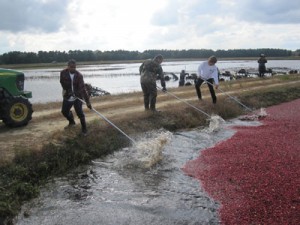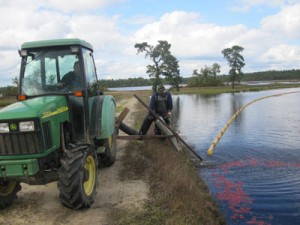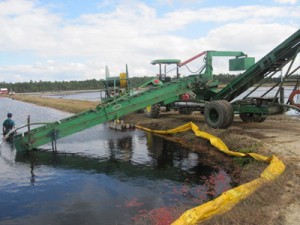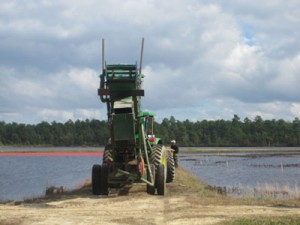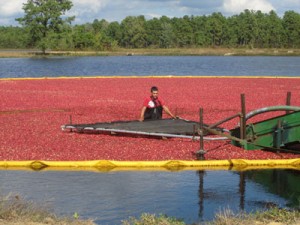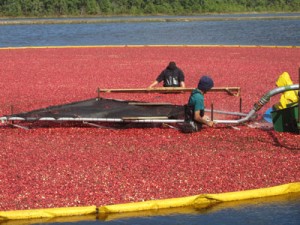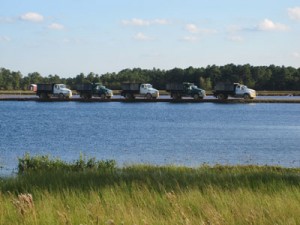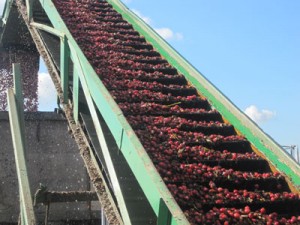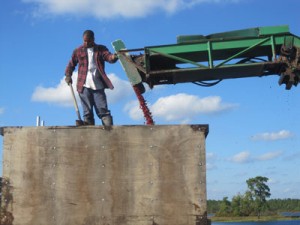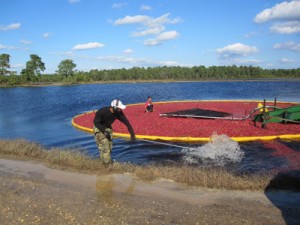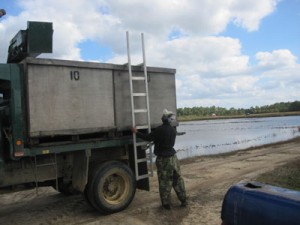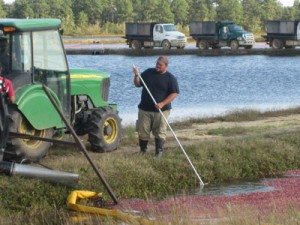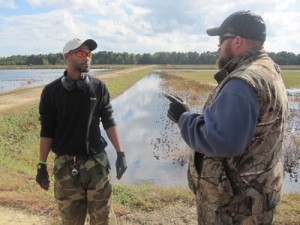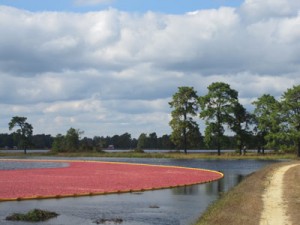Pine Island is now in the thick of harvest, running three teams seven days a week to bring in the crop! One of our newer team members, Dan Land, is experiencing his first cranberry harvest and is doing a fantastic job learning as he goes.
“We got a lead from Johnson’s Farm earlier this year,” explains COO Bryan vonHahmann. “They called Bill [Haines] and said they had someone who used to work for them and was really good, but they didn’t have anything for him at the moment and wondered if we might. So Mike [Haines] and I chatted with him a few times to see if it was the right fit, both for him and for us. Periodic check-ins have shown that he wants to learn everything as well as understand it. He’s a very hard worker and we think he’ll continue to grow.” Dan has also made an impression outside of Pine Island. “Dan actually ran the planting project at Red Road this past spring,” Bryan says, “and we got an email from Maryann at Integrity Propagation about how much she enjoyed working with him; none of us have ever received a review like that! It was good to hear.”
“We’re breaking him in slowly,” says operations manager Matt Giberson. “He’s helped with water a little bit, but now he’s on a gathering crew and getting a better idea of what harvest is all about. He’s asking a lot of questions; he’s a really smart guy, and I think he’s got great potential. His head is always on a swivel, taking it all in. He’s doing really well for his first harvest.” Not every team will finish at the exact same time, so Dan took an opportunity when his own crew was done to go check out how the other two teams ran things. “Each crew does things a little differently,” Matt says. “On Tuesday, once Dan’s crew was done, he went over to Blondie’s crew to see what he could pick up. That was really good to see.” Dan even takes ribbing really well: “He wears a lot of Jets gear. I mean, he says that’s because he worked for them, but it seems kind of fishy to me!” (We just think it means he really is very intelligent and understands that discretion is the better part of valor.)
“We’re going to keep Dan engaged and challenged,” Bryan says. “So far, it looks like it’s working.” Welcome aboard, Dan!

